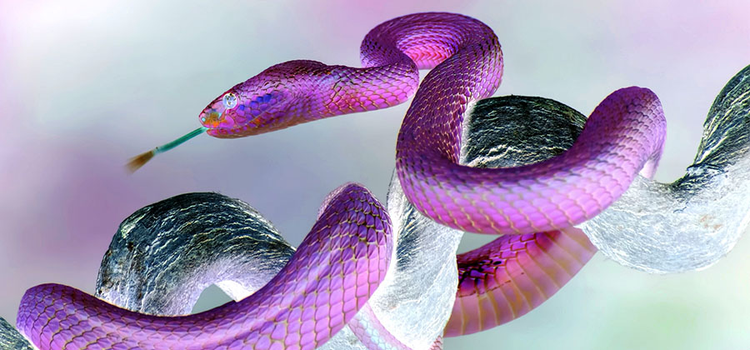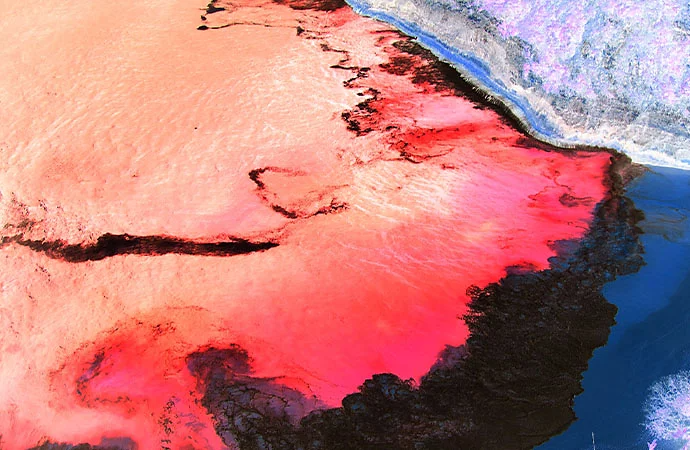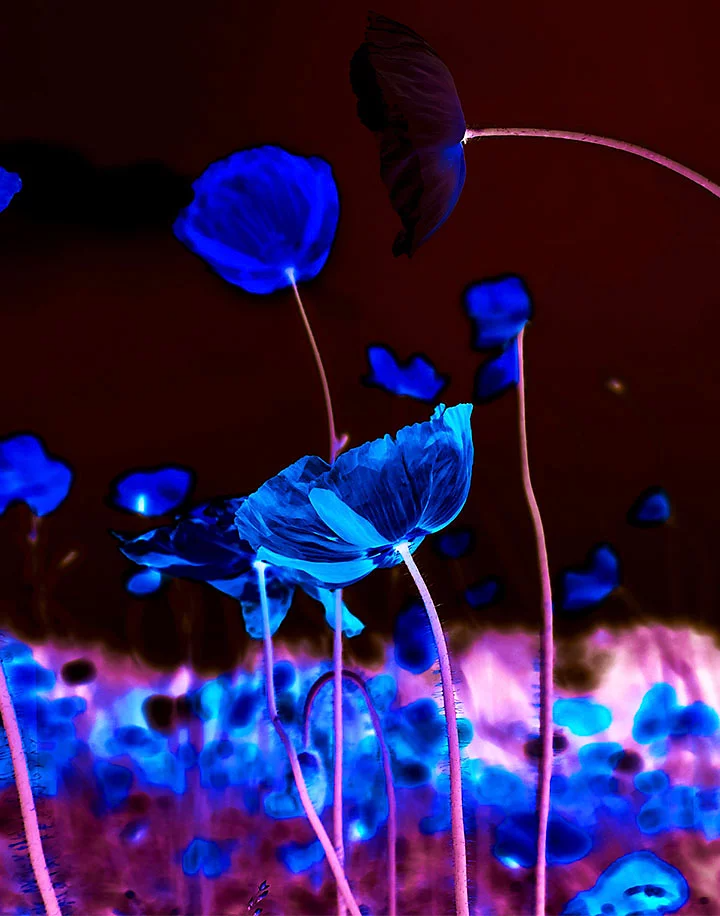
Photography
Invert colours in Photoshop.
Colour inversion in Adobe Photoshop is like unlocking a secret door in your creative toolkit. It's not just about flipping colours; it's about seeing your images in a whole new light.

Exploring the possibilities with colour inversion.
Embarking on the adventure of colour inversion opens up a world of artistic opportunities. With a simple tweak, even the most familiar scenes can transform into captivating visuals. This process invites you to explore and experiment, pushing you to think creatively about the use of colour in your projects.
Create imaginative art.
Inverted photos show an image of the world, but in a totally unexpected way. This makes them perfect for abstract photography, photo collages and fine art. They can also evoke a spooky, creepy or mysterious atmosphere, making them great for Halloween aesthetics.
Imagine applying colour inversion to the Sydney Opera House, turning its sails into a dark silhouette against a luminous sky, or witnessing Uluru's red majesty become a mystical shade of blue, each offering a fresh perspective on these iconic sights. Even the Great Barrier Reef, with its rich marine life, can be reimagined as a celestial dreamscape, showcasing the unexpected beauty that colour inversion can reveal in Australia's natural and cultural heritage.
Expanding your artistic toolkit.
Diving into colour inversion in Photoshop is an exciting way to expand your artistic toolkit, and it's incredibly user-friendly. Whether you're a seasoned artist or just starting out, flipping the colours of a photo you love can unveil new stories and perspectives. This act of experimentation could open up a whole new world of artistic expression for you.


How colour inversion works.
When you dive into colour inversion in Photoshop, you're essentially flipping the digital colour values of your image to their opposites. This transformation highlights textures and details that might have blended into the background, and colours that were once complementary suddenly clash or harmonise in unexpected ways, creating a visual experience that encourages viewers to look closer and see your image from a new, intriguing perspective.
Compare black and white to colour.
When you invert a black-and-white photo, the white pixels become black pixels. But if you invert a colour image, the inverted photo will have a flipped colour scheme. Photoshop will flip every colour to its opposite on the RGB or CMYK colour wheel. This means a vivid blue ocean becomes bright orange and a lush green field becomes magenta.

How to invert colours in your photos.
Embarking on your journey of colour inversion starts with a few easy steps that anyone can follow. This is where your adventure into the world of inverted colours begins, marking the initial phase of a creative exploration that extends far beyond the boundaries of conventional photography:
Easy steps to invert a picture:
- Open Your Image: Begin by opening the photo you want to transform in Photoshop.
- Invert the Colours: Go to Image > Adjustments and select Invert, or quickly press Ctrl+I (Cmd+I for Mac) to see the immediate change.
- Refine Your Image: After inverting, you might want to adjust the image further. Use tools like Levels, Brightness/Contrast, and Hue/Saturation to fine-tune your masterpiece.
- Creative Control with Layers: For those who love details, using adjustment layers allows you to apply the inversion effect selectively and adjust its intensity to perfectly capture your creative vision.

Beyond basic colour inversion.
Mastering the basics of colour inversion is just your first step into a broader world of creative potential. When you start to combine this technique with other advanced Photoshop methods, you unlock a canvas brimming with possibilities.
Crafting visuals with advanced techniques.
- Double Exposure and Inversion: Imagine blending an inverted nighttime cityscape with its daytime counterpart. This juxtaposition can create a scene that exists in neither day nor night but in a captivating liminal space that draws the viewer into its dreamlike quality.
- Selective Colour Adjustments: Fine-tuning colours within an inverted landscape can bring out dramatic contrasts or subtle harmonies, highlighting the beauty and complexity of natural forms in an entirely new light. This technique lets you steer the viewer's emotional response, crafting scenes that resonate with depth and feeling.
- Layer Masks and Inversion: Using layer masks to selectively apply inversion offers the power to isolate and emphasise specific elements of an image. This approach can transform a familiar scene into a striking visual statement, where contrasts between inverted and non-inverted areas guide the viewer’s focus and interpretation.
- Textural Overlays: Integrating textural overlays with inverted images can infuse them with an added layer of depth and interest. Whether it's the grain of aged wood or the intricate patterns of urban architecture, textures can enhance the visual impact of colour inversion, making the familiar seem otherworldly.
- Gradient Maps with Inversion: Applying gradient maps to inverted images allows for a creative recolouring that can shift the mood of your work dramatically. From vibrant and lively to soft and ethereal, gradient maps enable a tailored approach to colour that can redefine the atmosphere of any scene.
- Inversion and Collage: Creating a collage from inverted images and other visual elements opens up a realm of storytelling possibilities. This method can weave together disparate images into a cohesive narrative, using the contrast of inversion as a dynamic element to engage and intrigue.
Thematic explorations through colour.
Colour inversion serves as more than just an editing trick; it's a gateway to exploring deeper thematic concepts in your artwork:
- Historical and Futuristic Juxtapositions: Using colour inversion to cast historical scenes in a futuristic light, or vice versa, can provoke reflections on the passage of time and the fluid nature of progress.
- Emotional Contrasts: Transforming the mood of a scene through colour inversion allows for a visual exploration of emotion, turning bright and cheerful settings into introspective, contemplative spaces.
- Social Commentary: Inverting the colours of images that capture societal themes can offer a fresh perspective on familiar issues, encouraging viewers to engage with the material in a new and thought-provoking way.
- Abstract Art: Pushing colour inversion to its extremes opens up avenues for creating abstract art that emphasises form, colour, and texture, inviting viewers to interpret and interact with the work on a personal level.
Unleashing creativity with Photoshop’s colour inverter.
Embracing colour inversion in Photoshop isn’t just about learning a new editing technique; it’s about unlocking a door to vast creative exploration. This tool encourages you to view the familiar with fresh eyes, challenging conventions and experimenting with boundless possibilities. Let the adventure into colour inversion begin, and discover where your creativity can take you.
Do more with Adobe Photoshop.
Create beautiful images with Photoshop brushes, Content-Aware Fill, Photo effects, Neural Filter, Sky replacement and the many tools photographers rely on.
Explore the Photoshop family of apps.